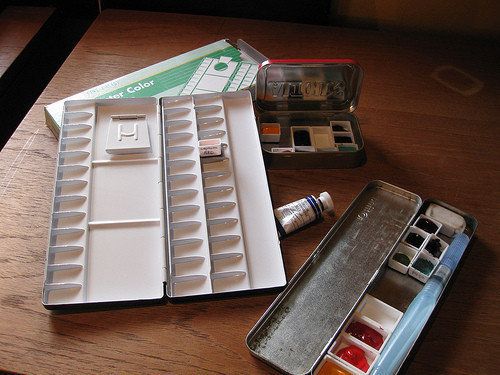
One of the best things about writing a weekly art blog is that I'm always on the lookout for hidden gems of art history -- or in this case, outsider art history -- that come as a wonderful surprise to me, much like finding buried treasure. So I was delighted when I logged on to Netflix recently, and up popped a suggestion for a film I might like titled The Highwaymen: Florida's Outsider Artists. The description read:
"This documentary focuses on a piece of American culture that is rarely spoken of. The Highwaymen tells the tale of a group of young African-American, self-taught landscape artists from central Florida in the late 1950s and early 1960s. In a time of segregation, the men traveled the region selling their detailed paintings from the trunk of their cars. Today, the paintings, originally sold as 'junk art,' are virtually priceless."
My curiosity went on high alert and I rented the DVD ASAP.

The nearly hour-long film credits the birth of this outsider movement to a group of artists in Ft. Pierce, Fla. who had little to no formal training. "They painted Florida back country scenes mainly -- coastal savannahs, hard-wood hammocks, tannin-stained rivers, almost always topped by expansive skies, capacious clouds and bold strokes of dramatic colors."
Central to the development of the Highwaymen was white artist, A.E. "Bean" Backus, often referred to as the dean of Florida landscape painters. Backus studied painting at Parsons in New York, and soon brought the Hudson River style to the big skies and Everglades of Florida. Despite the predominant racial prejudices and segregation of the '50s and '60s, Backus was willing to help any young student who wanted to study to become an artist.
One of the first African American artists that "Beany" took under his wing and taught his painting techniques to was Harold Newton. Newton learned quickly, and would sometimes paint as many as three or four paintings a day. No respectable gallery would show the work of an African American artist, so Newton began going from door to door, often bartering his work for rent, medical treatment, groceries or gas.
In 1955, an art teacher at Ft. Pierce's segregated Lincoln Academy recommended another student to Backus, a young African American man named Alfred Hair. Hair is often credited with being the founder and spiritual leader of the Highwaymen.
Hair wasn't satisfied with the painstaking brush painting of Backus or selling an occasional piece of work. He wanted to speed up the process and make money. So he developed a technique of painting faster using a palette knife with looser strokes. He painted on inexpensive construction materials, primarily Upson board and later Masonite. Old window and door frames were used for framing.
To gear up production, Hair soon began recruiting neighborhood kids to work for him, many of whom went on to become the original group of artists now referred to as the Highwaymen. They saw painting as the road to financial freedom and churned out work, factory-style, at an amazing rate, with some claiming that there are over 200,000 Highwaymen paintings in existence. Why work in the fields picking oranges for $6 a week, when you could sell a single painting for $10-$15?
Hair, well on his way to fulfilling his dream of becoming a millionaire, was tragically murdered at the age of 29. His group of followers were deeply affected by his death and lost some of the momentum he had created. However, they continued to paint and the original 26 members went on to become inducted into the Florida Artists Hall of Fame in 2004.
Prices for the paintings of the Highwaymen skyrocketed in the early 2000s, primarily as a result of bidding, buying and selling on eBay. Some of the works by the original 26 members of the group now sell in the five-figure category.
Click here to learn more about the Florida Highwaymen.
Cross-posted from Jane Chafin's Offramp Gallery Blog.
